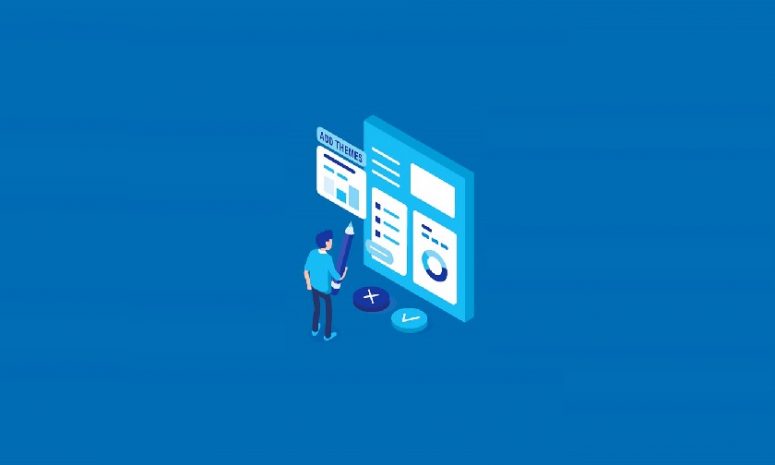
When you are planning to choose WordPress a theme for your website, there are a ton of options to choose from. Over 7,000 free themes are available now in the WordPress directory in addition to the countless premium themes available in various market places. So, how do you choose the best WordPress theme for your website? This article will share with you the top 11 things to consider when choosing a WordPress theme
Reasons to be cautious when choosing a WordPress theme:
WordPress can be used to build a variety of websites, which is why different themes cater to different markets. The theme of the website should be a supplement to the content of the website. For example, when writing a blog about political or social issues, a theme that can improve readability is needed.
Although some WordPress themes look very appealing, in some cases they actually make the website loading slower. They claim to be the perfect WordPress theme for all kinds of websites, but are often just opposite. Generally speaking, it will be wise to avoid heavy multi-purpose themes as they full of customization options most of which you won’t be using for your website. The extra junk codes might make your website slow affecting the whole site performance. In special cases, there are some multi-purpose themes which are fast and coded well. It is a fact that no one likes a website which loads slowly, and it can even cause Google to downgrade your sites’ search rankings.
Steps you can follow to ensure that you choose the best theme for your WordPress website are following.
1. Strive for simplicity when choosing a WordPress theme
Many WordPress themes have a lot of different colors, responsible layouts, cool animations, etc. Sometimes these things are needed, but most of the time they are not needed at all.
Choose a theme with a design and options that can help your business convey its message easily and effectively.
In short, you need your website to look awesome and should be easy to navigate for the site visitors. You can also look for options to get Calls-To-Actions (CTAs) that will help your site grow. CTAs can be built in to your WordPress theme, or added separately using a plugin.
2. Responsive theme
Responsive themes can automatically adjust the page layout on different screen sizes and devices. A large amount of network traffic now comes from mobile phones and other mobile terminals. Based on the content of a website, this traffic will even exceed 50% of the overall traffic. Google will rank mobile-optimized sites higher in mobile search results. Regardless of the content and audience of the website, all websites need to be responsive and fully support mobile.
Most themes on wordpress.org theme directory are responsive by default, but there are still sellers selling fixed-width layout themes. Such themes are not optimized for mobile. So, make sure that the theme chosen is mobile-friendly and optimized.
While selecting a theme, test whether the theme has been optimized for mobile by copying the URL of the theme demo page to Google’s Mobile-Friendly Test page for testing. This test will give some warning messages, no matter how perfect the subject being tested. Pay attention to the red signs, such as the text is too small, and the content width exceeds the screen.
3. Browser compatibility
Site users may use a variety of browsers. The theme may look perfect on the browser used for setting it up, but various problems may occur in other browsers. Most WordPress theme developers will use professional browser compatibility testing tools to strictly test their themes.
They may clearly mark the compatibility of the theme on the website, but if not marked, use some simple test methods to check the compatibility of the theme on different browsers, such as Google Chrome, Firefox, IE, Safari Wait. Don’t forget to test the compatibility in different mobile browsers.
4. Support for plugins
What makes WordPress really powerful is its plugins, which allow helps to do almost anything with WordPress. Although WordPress has numerous plugins that can be installed, there are several plugins that can be said to be required for every website, such as Gravity Forms, Yoast SEO, W3 Total Cache, etc. Make sure your theme can install all popular plugins, if not sure, please consult the theme developer before purchasing the theme.
5. SEO friendly
WordPress themes play a vital role in website SEO. A beautiful-looking theme may also produce inefficient HTML code, which will affect the performance of the website in search engines. Use the W3C Markup Validation Service to check whether the page outputs the correct HTML5 code. W3C tools will give a lot of warning tips, but it doesn’t matter.
6. Page Builders
Page Builders is a plugin that allows the creation of pages by dragging and dropping. Many advanced WordPress themes themselves have pre-installed page builders, some of which are only for theme developers. Using such a Page Builder to create a landing page may generate a lot of unnecessary code. If the theme is switched, these pages will require a lot of cleanups. Choose the themes that come with the most commonly used page builder
7. Theme technical support
One disadvantage of using free WordPress themes is that there is no guarantee of technical support. Although some developers also provide excellent support for their free themes, many free themes are not technically supported.
Make sure that the theme you choose has complete documentation and technical support. Most advanced WordPress themes will provide detailed documentation and 1-year email support.
8. Rating and evaluation
Another hard indicator of the quality of the WordPress theme is the user’s rating and evaluation of it. If the theme is sold on a third-party market, it is easy to see user reviews. For free themes, click on the theme under the theme column of the WordPress.org website and see the number of user ratings and reviews on the theme details page. Almost all WordPress themes will have some bad reviews, but if there are more bad reviews, read them carefully.
9. Translation + Multilingual
A large number of WordPress website languages are not English. To build a website in other languages, maybe you plan to build a multilingual WP site in the future. Make sure them selected has been translated and supports multilingual plugins for WordPress.
10. eCommerce Ready
If you are looking to sell digital products on your site, you should choose a theme that is compatible with WooCommerce or any other e-commerce plugins. Mainly, you can check out the theme demos to see how the shop, product, and product category pages load. If the theme has not a shop option, try to install a WooCommerce plugin to create a product in order to to see what the product category looks like.
11. Is it updated Frequently?
WordPress CMS is updated on a regular basis because of security upgrades and bug fixes. It’s important to choose a theme that is also maintained and updated on a regular basis. It is better to avoid a theme if it was not updated/modified for the last 2 years.
Choosing a WordPress theme should be handled with care. Using an inappropriate theme can negatively affect your website performance and user-friendliness.
Hopefully this article has provided you with insight to select the best WordPress theme for your website.





